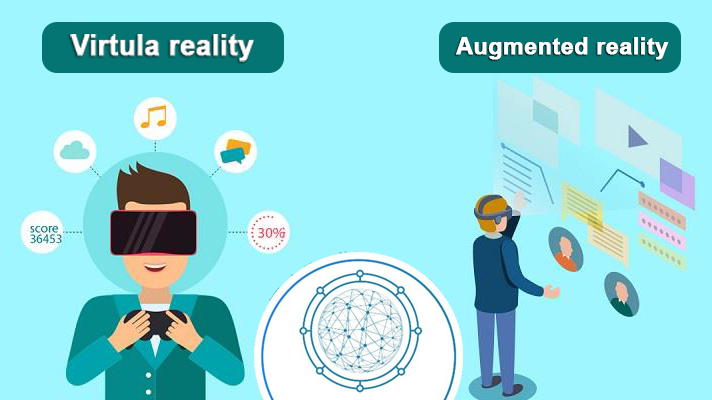Introduction
Augmented Reality (AR) and Virtual Reality (VR) have transformed the way we interact with digital content. These technologies are no longer just buzzwords; they are reshaping industries and redefining experiences. In this blog, we will explore the evolution of AR and VR, their current applications, and future potential.
The Origins of AR and VR
The journey of AR and VR started decades ago. Early VR systems like the Sensorama in the 1960s offered immersive experiences through multi-sensory input. In the 1990s, companies like Sega and Nintendo attempted to bring VR to the masses, but the technology was not yet mature enough.
AR began with simpler overlays in the 1960s, notably Ivan Sutherland’s “The Sword of Damocles.” It wasn’t until the early 2000s, with the rise of smartphones, that AR began to see significant development. The release of apps like Pokémon GO in 2016 showcased AR’s potential to the world.
The Technology Behind AR and VR
Both AR and VR rely on advanced hardware and software to deliver their experiences.
VR Technology:
- Headsets: Devices like the Oculus Rift, HTC Vive, and PlayStation VR immerse users by blocking out the real world.
- Motion Tracking: These headsets use sensors to track head movements and sometimes hand movements, providing a seamless experience.
- Controllers: Handheld devices that allow users to interact with the virtual environment.
AR Technology:
- Smartphones and Tablets: Devices equipped with cameras and sensors that overlay digital information onto the real world.
- AR Glasses: Wearables like Microsoft HoloLens and Google Glass provide hands-free AR experiences.
- Software: AR apps use complex algorithms to recognize surfaces and objects, placing virtual objects in real-time.
- For more please visit
Applications of AR and VR
1. Gaming
- VR has transformed gaming with titles like “Beat Saber” and “Half-Life: Alyx,” providing immersive and interactive environments.
- AR games, such as Pokémon GO, blend digital and real-world experiences.
2. Education
- VR enables virtual field trips and interactive lessons, making learning more engaging.
- AR apps allow students to visualize complex concepts, such as anatomy or astronomical phenomena.
3. Healthcare
- Surgeons use VR for training, simulating procedures in a risk-free environment.
- AR assists in surgeries by overlaying critical information, improving precision and outcomes.
4. Retail
- AR apps let customers virtually try on clothes or see how furniture fits in their homes.
- VR can create virtual showrooms, offering immersive shopping experiences.
5. Real Estate
- Virtual tours allow potential buyers to explore properties from anywhere, saving time and travel costs.
6. Manufacturing
- AR provides real-time instructions for assembling complex machinery, reducing errors and training time.
7. Automotive
- VR is used in designing and testing car models, saving costs on physical prototypes.
- AR can offer heads-up displays in vehicles, enhancing driver safety and information accessibility.
8. Tourism
- Virtual tours of landmarks and destinations offer a taste of travel experiences, aiding in travel planning.
Industry Impact
AR and VR are not limited to consumer applications. They significantly impact various industries:
- Manufacturing: Streamlining assembly processes and training.
- Automotive: Enhancing design, testing, and in-car experiences.
- Healthcare: Improving surgical precision and medical training.
- Retail: Revolutionizing the shopping experience.
- Real Estate: Transforming property viewing and sales.
- Education: Making learning interactive and engaging.
- Tourism: Offering new ways to explore destinations.
Challenges and Future Prospects
Despite their potential, AR and VR face challenges. The high cost of hardware, limited content, and technical issues like motion sickness in VR are hurdles that need to be overcome. However, continuous advancements are making these technologies more accessible.
The evolution of AR and VR is promising. The rollout of 5G technology will enable more seamless and immersive experiences. We can expect further integration into daily life, making AR and VR indispensable tools for communication, entertainment, and productivity.
Conclusion
The evolution of AR and VR has been nothing short of remarkable. From early experiments to advanced applications, these technologies are changing how we interact with the world. As AR and VR continue to evolve, they will unlock new possibilities and transform our experiences in unimaginable ways. The journey of AR and VR is just beginning, and the future holds endless possibilities. Stay tuned for more innovations in this exciting field.

Leave a Reply